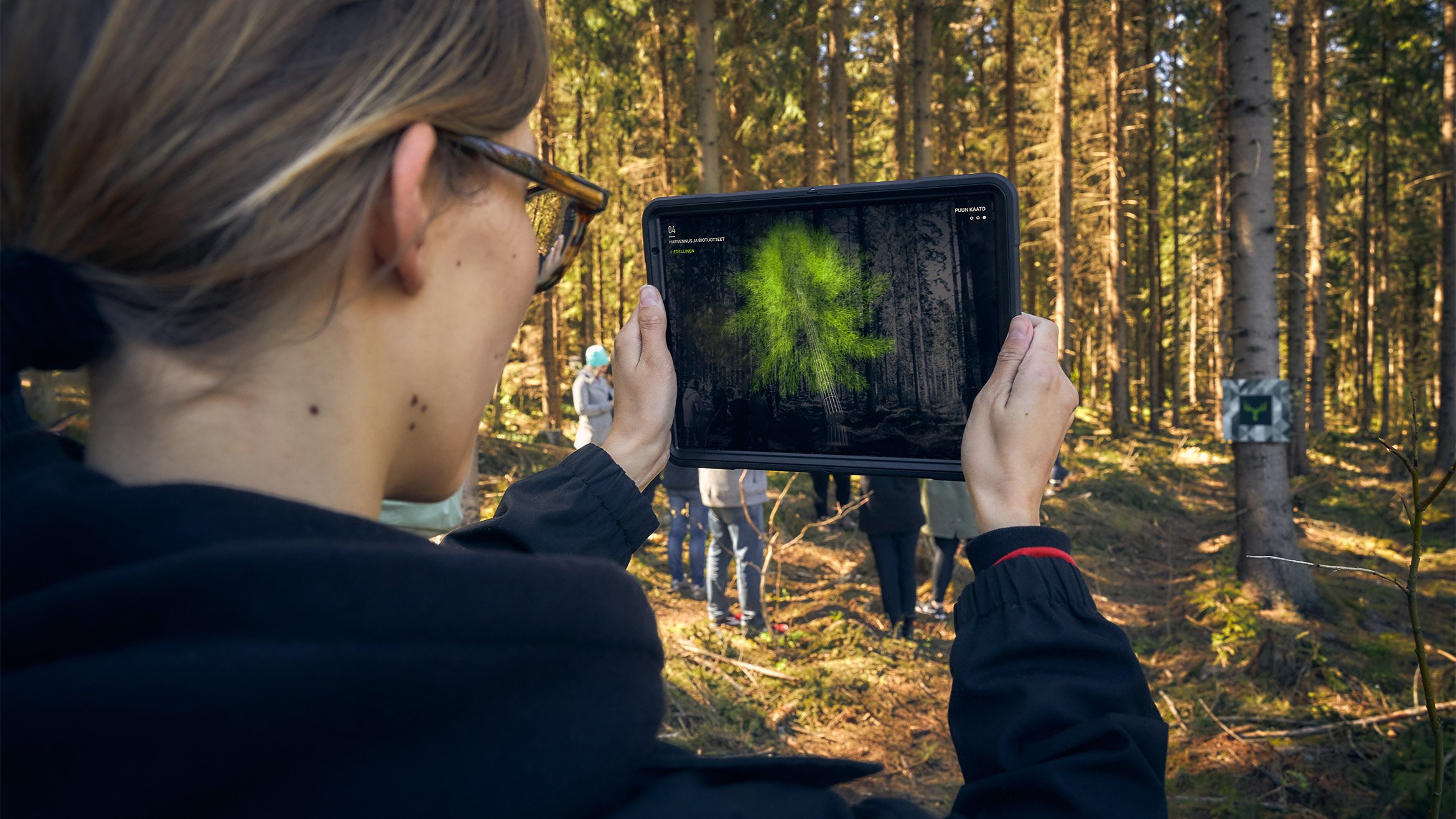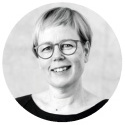A conifer takes an average 80 years to grow from a small seedling into a full-size tree. During that time, its growth in commercial forests is promoted by forest management in a variety of ways.
Time is condensed at Metsä Group’s forest visitor centre Nemus Futurum, located near Lohja in Southern Finland. In a little more than two hours, the site presents a comprehensive overview of the best practices of sustainable forest management in the various growth phases of the forest. Guests also receive information about the benefits of nature management in commercial forests and come to understand how good forest management affects things like the climate and biodiversity.
Technology illustrates forest growth
The guided tour starts at a site where new spruce seedlings have been planted after regeneration felling. Visitors then move through a stand of seven-year-old seedlings to a thinned forest that is about 60 years old. If forest management measures on the young stand are carried out at the right time, the first thinning can provide up to 30–50 per cent more wood.
Guests learn about various types of forest site and forest management methods, and see both periodic and continuous cover forestry.
Augmented reality is used to expand the experience. Every guest is provided with an iPad that gives further information about the site and allows them to travel forwards and backwards in time.
“With new technology, we can illustrate how the forest grows, and how various forest management measures affect tree growth,” says Annamari Heikkinen. She is a Communications Specialist at Metsä Group and Nemus Futurum’s main guide.
As the guests move from the regeneration felling to the seedling site, the iPad displays an animation. It shows how well-managed spruce seedlings have more space and light, grow more quickly, and bind more carbon dioxide.
Only in a real forest can you experience all the smells and feel the moss under your feet.
Genuine forest experiences
When the visitor centre was designed, it was clear that the guests would need to be present in a genuine Finnish forest.
“You have to see and feel the forest in person. Only in a real forest can you experience all the smells and feel the moss under your feet,” says Heikkinen.
The centre was opened in 2019 in the grounds of Kirkniemi Manor, an old country house rich in tradition, which is now owned by Metsä Group. The name Nemus Futurum is Latin for forest of the future.
On the tour, guests see how forest biodiversity is safeguarded in the various phases of forest management. They learn about retention trees, high biodiversity stumps, buffer zones, and so on.
“Forest management is not generally used for grove forests, forested wetlands and the banks of forest brooks. They are important habitats for species such as the white-backed woodpecker, whose nesting numbers have recently begun to increase. Woodpeckers can also nest in commercial forests if they fulfil vital structural criteria,” says Heikkinen, who is a forester by training.
Even though you might not see a woodpecker, its pecking can be heard from far away. At midsummer, you can often hear a cuckoo in the forest. With luck, visitors may encounter some of the European fallow deer living in the Kirkniemi forests.
An important part of the tour is a visit to a lean-to shelter on a high hill. This rest area provides a view of a broad landscape, where trees of different ages and species form a green mosaic stretching towards the horizon.

Transforming forest management
The forest changes, and so does Nemus Futurum. The spruce bark beetle, an insect pest, was found to be damaging forests in Kirkniemi and an area previously used to demonstrate thinning had to be regenerated in January 2022. The new thinning demonstration area is located half a kilometre away from the previous one.
In the summer of 2022, three beehives will be brought to Kirkniemi. Honeybees play an important role in the pollination of forest berries and even in forest regeneration. The pioneer species that colonise regeneration felling areas, such as fireweed, common nettle and raspberry, all rely on bees for pollination.
New information generated by forest management is also used at Nemus Futurum. The regeneration felling area introduces visitors to inverted mounding, a method developed by Metsä Group to replace heavy tilling and provide seedlings with favourable growth conditions.
Forest buffer zones surprise visitors
The visitors at Nemus Futurum have been very impressed by what they have seen, says Ari Harmaala, Metsä Fibre’s Senior Vice President, Sales and Customership.
“Many of our visitors are interested in forest biodiversity. They have also had some surprises, such as how large we make forest buffer zones,” says Harmaala.
He recommends a visit to Nemus Futurum to all Metsä Fibre’s customers, but also to architects and converters of sawn timber.
“These days, we expect sustainability from wood sellers and consumers alike. Nemus Futurum offers a good, practical understanding of Finnish forest management, in addition to spectacular experiences of nature. If you are interested, get in touch with your Metsä Fibre contact person. Our customers are very welcome at the visitor centre.”
This article was originally published in Timber Magazine issue 2022–2023.


